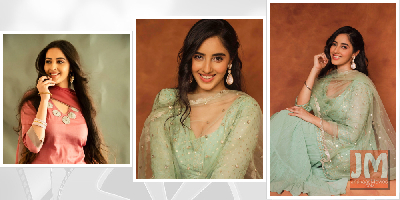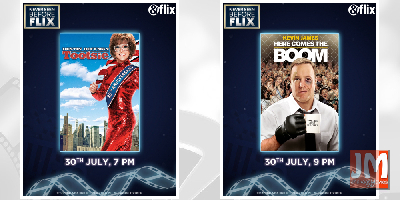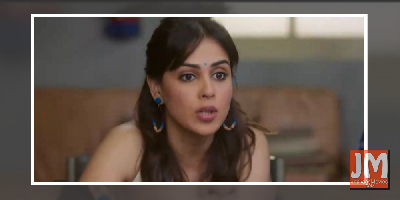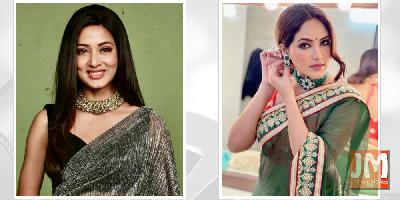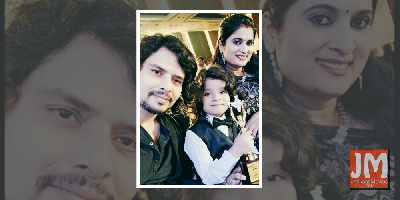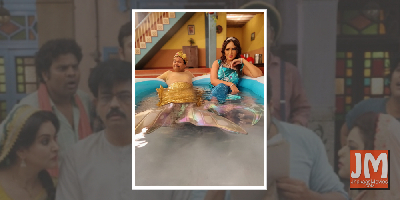 Aan Tiwari honoured with Best Child Actor award for Baal Shiv
Aan Tiwari honoured with Best Child Actor award for Baal Shiv Ghategi rahasymayi ghatnaye!
Ghategi rahasymayi ghatnaye! Amazon Prime Video unveils the 2021 Festive Line-up; brings a heady mix of Indian and International titles on the service
Amazon Prime Video unveils the 2021 Festive Line-up; brings a heady mix of Indian and International titles on the service Release: Music video of, Yeh Haalaath, from Mumbai Diaries 26-11
Release: Music video of, Yeh Haalaath, from Mumbai Diaries 26-11 Bhumi Pednekar feels she shares feel-good value with Akshay Kumar on screen
Bhumi Pednekar feels she shares feel-good value with Akshay Kumar on screen
Films and fashion (Column: B-Town)

By Vinod Mirani
There always used to be a debate till not long ago whether films and filmstars inspired fashion in society or do they merely reflect fashion and trends in general.
Come to think of it, there has been no noticeable influence of films and filmstars on creating trends that the people followed except in certain phases. Initially in films, the men mostly followed western trends. Usually, they were dressed smartly in suits when it came to urban stories. Otherwise, Dhoti was the norm. And, the majority of the male urban population, by then, had adapted western garbs while the women still stuck to sari. Even the traditional Punjabi garb of women - the Shalwar Kameez - was still a long way away. Later, it came to be known as dress! If a woman was not wearing a sari, she was wearing a dress.
As for women, it was limited to a Sari whether she was romancing or playing a housewife. Tradition ruled. If there was an influence of Hollywood films, it was limited to male stars. All sorts of films were being made and a hero even donned a hat, which was not Indian. As it were, few followed filmstars when it came to trends in fashion. Society was too traditionally ingrained in customs.
So far, there was no debate on the people following fashion trends from films.
There was a single trend that was common to filmstars as well as youth of the 1950s and ‘60s.
I cannot say for sure who picked it from who. There was this hairstyle that actors like Dev Anand and Dilip Kumar sported, as did the men in the real life. This fashion must have been timebound since both the actors, Dilip Kumar and Dev Anand, changed eventually.
As far as I can recall, Dev Anand changed it midway through the filming of his movie, "Guide", and went on to retain the new hairdo for the rest of his life.
One would reckon that the debate over films followed life trends or whether the public followed films started roughly around the 1970s. In most cases, these were not followed as fashion. Rather, picking up an odd something that a hero did in a particular film.
The best example here was the checked - rather, designer - hat that Dev Anand sported in his musical hit, "Jewel Thief". Actually, female stars inspired more fans to follow their hairstyles. The one that became a craze was filmstar Sadhna's Chinese Cut with the patch of hair falling on her forehead. It came to be known as Sadhna Cut.
The other female hairstyle was called bouffant, a fluffy hairstyle, which was dubbed Chidiya Ka Ghosla (bird's nest) in Hindi. Most heroines used it and so did women in real life, especially on special occasions.
The hat from "Jewel Thief" became such a rage that every next young lad was seen wearing it. After all, despite his seniority, Dev Anand had always been a youth icon. In fact, in Mumbai, he was known as the Matinee Idol. In those days, cinema halls ran four shows a day between 12 noon and 9 pm for new films. But, they screened old Hindi films in, what was called the matinee show, which started at around 10 am. These old films were screened at half the admission rates and were popular with collegians. Dev Anand, films were the most sought after. (In North, matinee shows meant 3 pm shows.)
India did not have the system of franchise when it came to film fashion or memorabilia as it happens in the West. Hence, the "Jewel Thief" hat, which would have sold in lakhs, brought no profits to the production house.
Another product that drew attention was the Rajdoot mini motorbike used in the film "Bobby". The bike was a hit as was the film. However, the craze for the bike did not last long due to technical reasons, which only bike riders could define. Having experienced a ride many times, I tend to agree.
The thing about bikes was that, they were popular with the collegegoing youth but, their decision to ride a bike and the buying power rested with parents. Another product that took off after "Bobby" was the Bobby hairpin for girls. Sold in millions, it ensured no gain for the filmmaker.
Imitating star fashion was back with superstar Rajesh Khanna. The actor established himself as such a legend as an icon of romance, that just about everything about him was an inspiration for his fans. Rajesh Khanna's costume designer devised a special kind of kurta for him because tucked-in shirts did not look good on him since he had big backside! The kurta he wore came to be known as the Guru kurta and became a rage. This was one fad that lasted for a long time.
Khanna fans also tried to imitate his hairstyle. So much so that even actor Dharmendra decided to appoint Khanna's hairstylist for himself.
While costumes and hairstyles did not always create trends, the stars' costume designers (as their tailors were known), as well as barbers (known as hair stylists) benefitted the most. Stylo, Kachins, Lifestyles, Bada Saab were the prominent costume designers.
Kachin's was the designer for Amitabh Bachchan. Usually, they preferred open collar shirt with a jacket for the hero. Costume designers were good at camouflaging the shortcomings of their stars. Bachchan, it was said (and seen), had a hugely drooping left shoulder. Kachins did well to pad it up. However, open collar was not made for frail Indian male physic and never caught up.
The sari was replaced with shalwar kameez for female stars. Yet, it did not get through to the women of the world. Finally, it did, with the era of tight churidar and tastefully designed kurtas which helped accentuate a heroine's body. The mandatory chunni was done away with.
The best ambassador to carry these churidar kurtas in those days was Mumtaz, a huge star in her own right. The change to sari was made with a sexier way of wrapping it just above hips thereby making the woman's hips more prominent. That has stayed.
Besides Mumtaz, Zeenat Aman and Parveen Babi were considered the most fashionable who could both carry any kind of dress. Also, influenced by Muslim social films, gharara and sharara became popular for a while but these were not day-to-day fashion and remained limited to special occasions like weddings.
Can't say if it is because of films or tradition, but the Punjabi Dress, as shalwar kameez are known, has been accepted as the all-India alternative to sari. That is, even most of the schools from the North to deep South, have accepted the dress as the school uniform for it covers the whole body even better than the sari does.
In between, there were other flashes of fashion that were much discussed in the media as well as public. One of them was Sharmila Tagore sporting a bikini in the film "An Evening In Paris" (1967). The other was Shashi Kapoor wearing bell bottom trousers in "Suhana Safar" (1970). Both created a debate. The thing with Bikini was that it did not have much use to Indian women while, when it came to bell bottoms, they were already in with the college lads; Shashi Kapoor may just have given them further boost.
Now, there are no barriers between film fashion and real-life dressing. In fact, films reflect real-life fashion as that is more identifiable to the movie buffs. It is mostly about denims, jeans, hot pants and what have you. But, to break the monotony and provide some comic relief, we have Ranveer Singh and his outrageous dresses.
@The Box Office
* The week saw two release -- "Panipat", a historical, and the youth-oriented comedy "Pati Patni Aur Woh", which is a remake of BR Chopra's 1978 film of the same name. "Panipat" may not have much relevance, coming across as a film mostly about costumes and the period ambience. Also, while the film's lead stars don't quite enjoy a following currently, the subject has mainly regional appeal, being a part of Maratha history.
"Pati Patni Aur Woh", on the other hand, is a light comedy meant to entertain only.
* Five films released a week ago. Three of these -- "Tony", "Xray" and "Ye Saali Aashiqui" -- fell by the wayside. "Commando 3" sustained and "Hotel Mumbai" was limited to the multiplex audience, with collections remaining on the lower side.
"Commando 3" collected about 8.25 in its first week.
"Hotel Mumbai" could manage about seven crore in its opening week.


